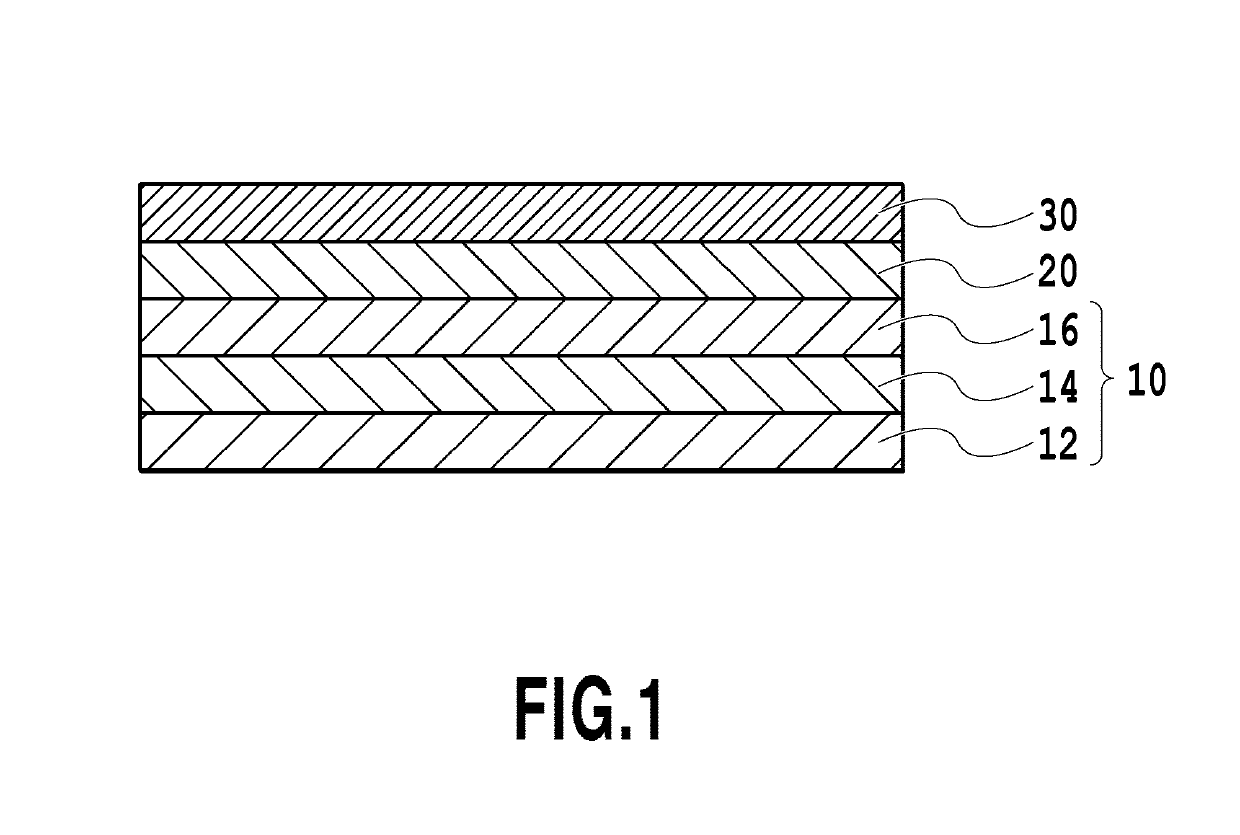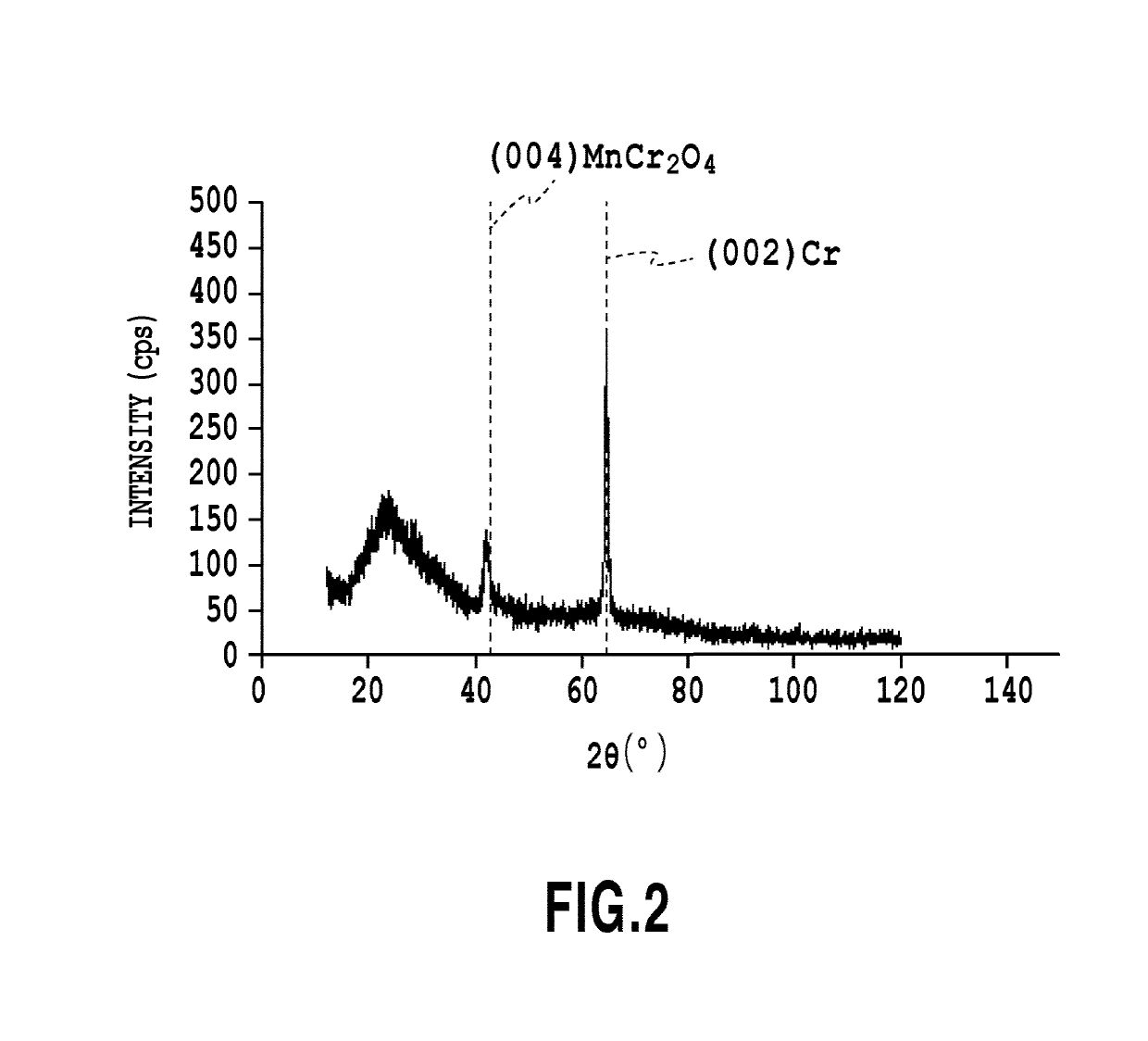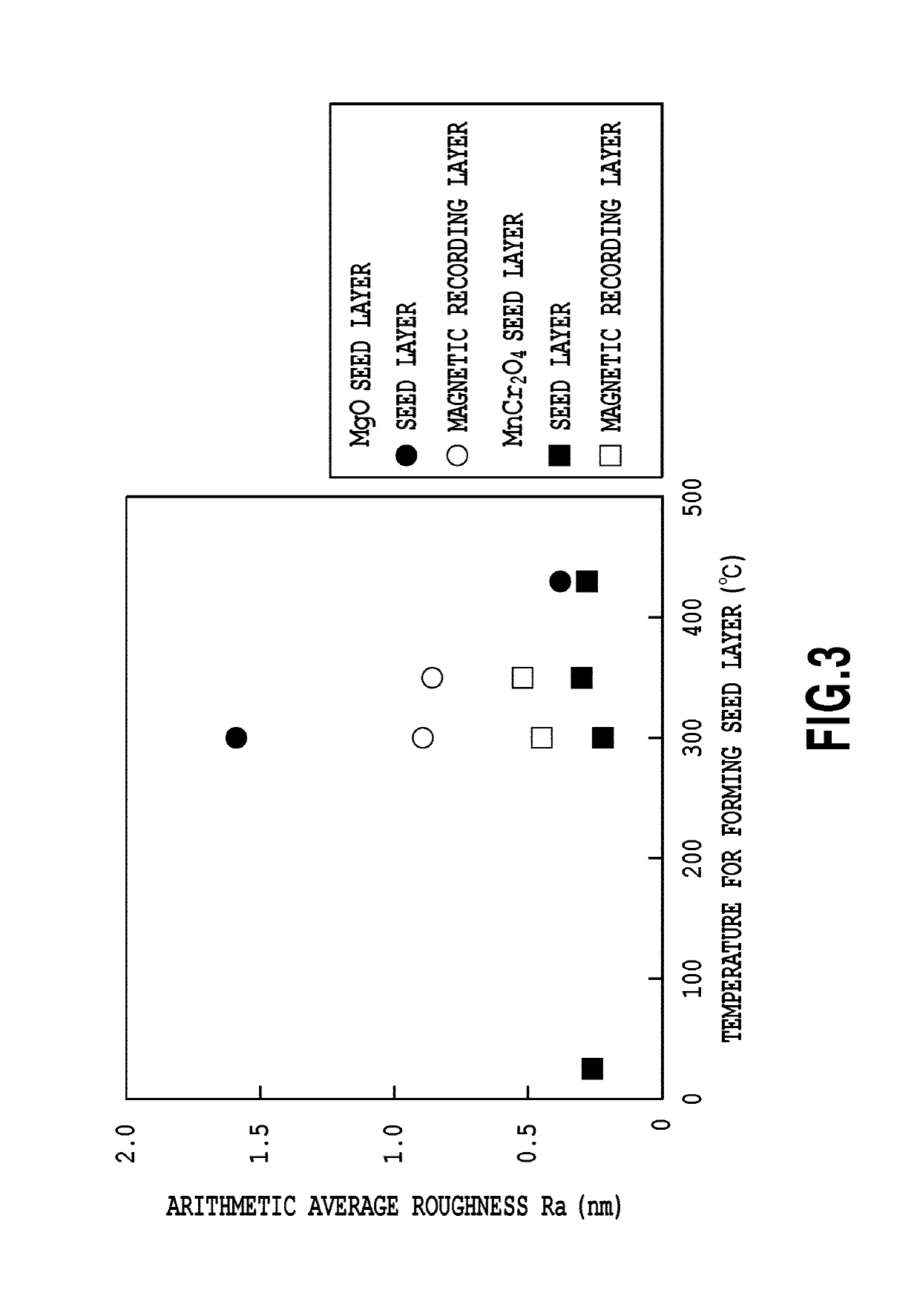Magnetic recording medium
a recording medium and magnetic recording technology, applied in the field can solve the problems of deterioration of read-write characteristics of magnetic recording mediums, decrease in thermal stability of recorded magnetization, etc., and achieve the effect of reducing the surface roughness of the magnetic recording layer and squareness ratio mr/ms
- Summary
- Abstract
- Description
- Claims
- Application Information
AI Technical Summary
Benefits of technology
Problems solved by technology
Method used
Image
Examples
example 1
[0039]A chemically strengthened glass substrate having a flat surface (N-10 glass substrate manufactured by HOYA CORPORATION) was washed to prepare non-magnetic support 12. The washed non-magnetic support 12 was brought into a sputtering device. Then, Ta adhesive layer 14 having a thickness of 5 nm was formed by an RF magnetron sputtering method in Ar gas at a pressure of 0.20 Pa which uses a Ta target placed 180 mm apart from the substrate. The electric power applied to the target was 200 W.
[0040]Then, Cr interlayer 16 having a thickness of 20 nm was formed by an RF magnetron sputtering method in Ar gas at a pressure of 0.20 Pa which uses a Cr target placed 180 mm apart from the substrate, to obtain substrate 10. The electric power applied to the target was 600 W.
[0041]Then, to the substrate 10 was formed MnCr2O4 seed layer 20 having a thickness of 10 nm by an RF magnetron sputtering method in Ar gas at a pressure of 0.18 Pa which uses an MnCr2O4 target placed 240 mm apart from the...
example 2
[0052]The substrate 10 was obtained by forming the Ta adhesive layer 14 having a thickness of 5 nm and the Cr interlayer 16 having a thickness of 20 nm onto the non-magnetic support 12, by means of the similar procedure to Example 1.
[0053]Then, to the substrate 10 was formed MnCr2O4 seed layer 20 having a thickness of 10 nm by an RF magnetron sputtering method in Ar gas at a pressure of 0.1 Pa which uses an MnCr2O4 target placed 166 mm apart from the substrate 10. The electric power applied to the target was 200 W. Further, the temperature of the substrate 10 was set to 430° C.
[0054]Then, the stacked body in which the seed layer 20 had been formed was heated to a temperature of 430° C., and FePt—C magnetic recording layer 30 having a thickness of 2 nm was formed by an RF magnetron sputtering method in Ar gas at a pressure of 1.5 Pa which uses an Fe50Pt50—C target placed 166 mm apart from the substrate 10. The content of C in the target was 40% by volume.
[0055]Further, the protective...
example 3
[0060]A magnetic recording media were obtained by repeating the procedure of Example 1, except that the substrate temperature was fixed to 350° C. and the thickness of the seed layer 20 was changed, during formation of the seed layer 20. The thickness of the seed layer 20 and the measurement result of the magnetic anisotropy constant Ku of the resultant magnetic recording media are shown in Table 3.
[0061]
TABLE 3EFFECT OF THICKNESS OF SEED LAYERThickness ofMagnetic AnisotropySeed LayerConstant Ku*1(nm)(×107 erg / cm3)20.36451.78103.09*1107 erg / cm3 = 1 J / cm3
[0062]As apparent from Table 3, the magnetic recording media having the large magnetic anisotropy constant Ku were obtained by setting the thickness of the seed layer to 5 nm or more.
PUM
| Property | Measurement | Unit |
|---|---|---|
| roughness | aaaaa | aaaaa |
| thickness | aaaaa | aaaaa |
| thickness | aaaaa | aaaaa |
Abstract
Description
Claims
Application Information
 Login to View More
Login to View More - R&D
- Intellectual Property
- Life Sciences
- Materials
- Tech Scout
- Unparalleled Data Quality
- Higher Quality Content
- 60% Fewer Hallucinations
Browse by: Latest US Patents, China's latest patents, Technical Efficacy Thesaurus, Application Domain, Technology Topic, Popular Technical Reports.
© 2025 PatSnap. All rights reserved.Legal|Privacy policy|Modern Slavery Act Transparency Statement|Sitemap|About US| Contact US: help@patsnap.com



